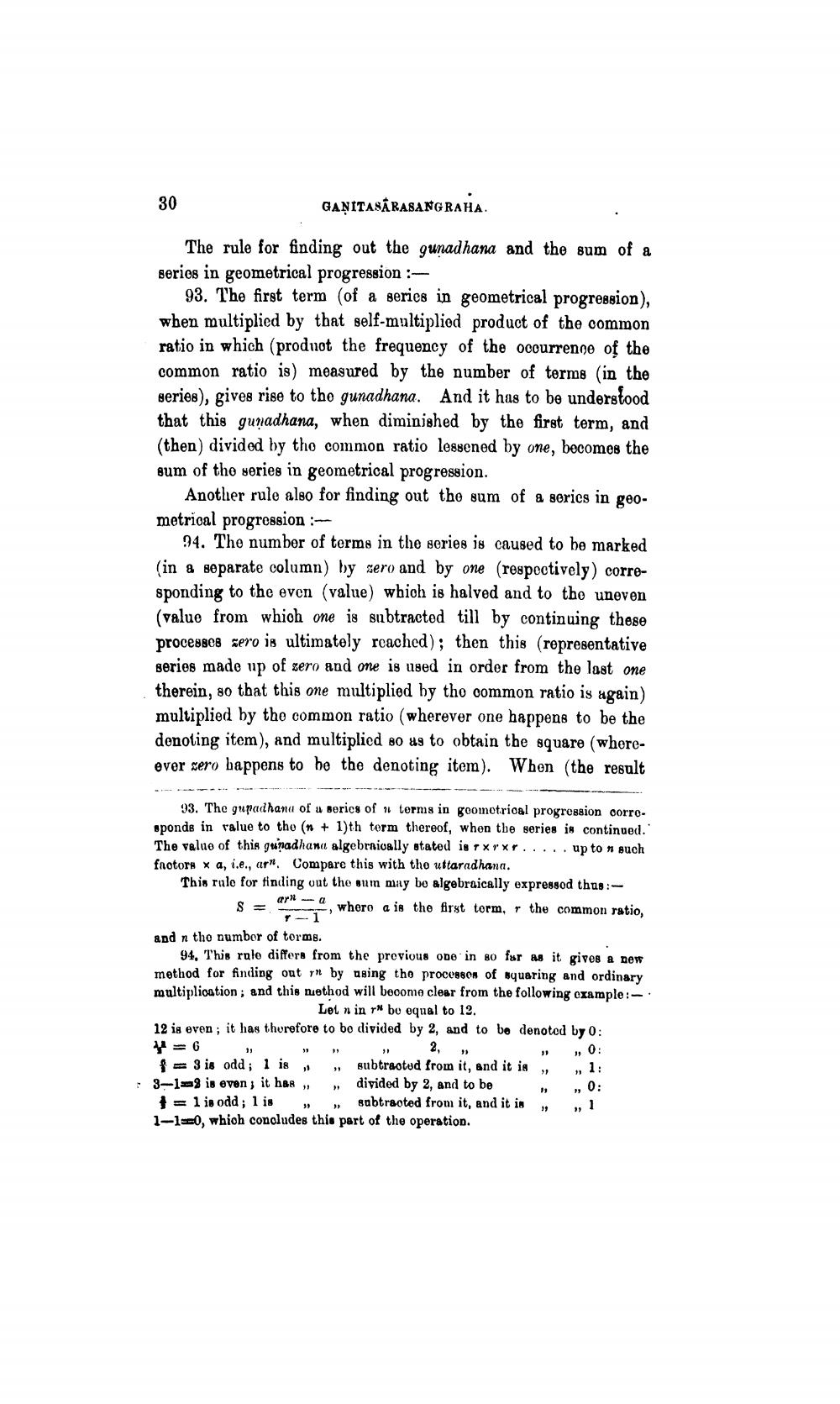________________
GANITASĀRASANGRAHA.
The rule for finding out the gunadhana and the sum of a serios in geometrical progression :
93. The first term (of a series in geometrical progression), when multiplied by that self-multiplied product of the common ratio in which (produot the frequency of the courrenge of the common ratio is) measured by the number of terms (in the series), gives rise to the gunadhana. And it has to be understood that this gunadhana, when diminished by the first term, and (then) divided by the common ratio lessened by one, becomes the eum of the series in geometrical progression.
Another rule also for finding out the sum of a series in geometrical progression :
94. The number of terms in the series is caused to be marked (in a separate column) by sero and by one (respectively) corresponding to the even (value) which is halved and to the uneven (value from which one is subtracted till by continuing these processes sero is ultimately reached); then this (representative series made up of zero and one is used in order from the last one therein, so that this one multiplied by the common ratio is again) multiplied by the common ratio (wherever one happens to be the denoting item), and multiplied so as to obtain the square (whereever zero bappens to be the denoting item). When the result
S = arxa
93. The guradhana of u series of terms in goometrical progression corresponde in value to tho (n + 1)th term thereof, when the series is continued. The valuo of this gunadhana algebrnioally stated is r xrx..... up to n such fnotors x a, i.e., ara. Compare this with the uttaradhana. This role for finding out the sum may be algebraically expressod thus :
, whero a is the first torm, the common ratio, and n tho number of tormg.
94. This rule differs from the previous one in so far as it gives a new method for finding out by using the processon of squaring and ordinary multiplication; and this niethod will become clear from the following cxample:
Letnin r bo equal to 12. 12 is even; it has therefore to bo divided by 2, and to be denoted
0: f = 3 is odd; 1 is it subtraoted from it, and it is , 1: 3-12 is even; it has divided by 2, and to be =lis odd;l is subtracted from it, and it is
1 1-1-20, which concludes this part of the operation.




